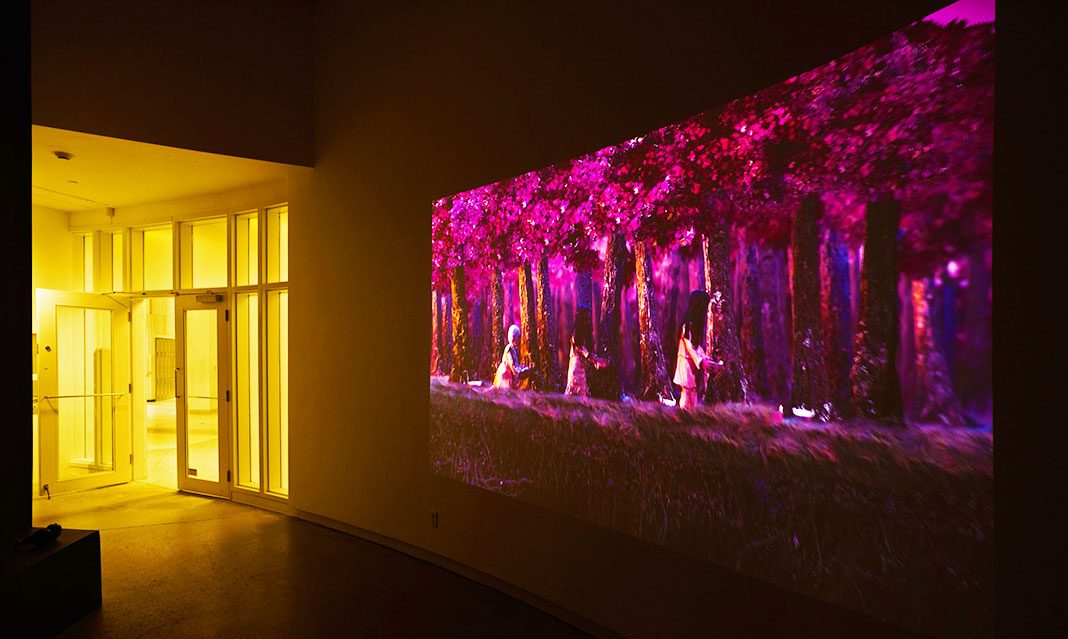In an age where animation has the power to bring life and vitality to a series of still frames, the art exhibit Other Life Formings at the Blackwood Gallery poses an interesting question: how do we determine what can be called “alive”? Three works are currently on display in the Blackwood Gallery and weave together themes of life, time, animation, and nature.
The first installation in the exhibit is The Lighthouse by Parastoo Anoushahpour. In the center is a round, rotating screen with the image of a lighthouse on a cliffside. Projectors on either side of the screen cast the image onto the walls. The slow motion of the screen and relaxing ocean sounds accompanying the piece make it very serene. The exhibition calls attention to the interesting in-between space that the piece occupies: “it is neither a photograph nor a film and yet it marks a time, a place, and a memory,” reads the exhibition guide. Instead of a still image representing a single static moment, the scene constantly disappears and reappears before the viewer, making it more present and engaging to the viewer.
Next is Linda Sanchez’s 11752 mètres et des poussières. The 71-minute video tracks a droplet of water as it travels across an unidentified surface. While the subject seems ordinary, it feels surprisingly lively when viewed up close. It’s reminiscent of being in a long car ride and watching water droplets fall down the window, but as if the droplet were autonomous and alive, moving on its own. A viewer would know that a water droplet isn’t sentient, but the way it’s shot suggests that the droplet has a life of its own. The piece plays well with conceptions of what can be considered alive, which is a major theme of the exhibit.
Finally, there’s Amanda Strong’s animation, Biidaaban (The Dawn Comes). The short film tells the story of Biidaaban, an Indigenous, gender-fluid person carrying on their ancestors’ practice of collecting sap from maple trees. Biidaaban is aided by a sasquatch creature named Sabe. Together, they travel through the city, connecting to the land and the past along the way. Strong combines stop-motion animation with unique colour schemes and character designs, making the characters and scenes feel otherworldly. Beyond the visuals, the short film tells a unique and culturally significant story. Even to a viewer who knows little to nothing about the Indigenous faith, Biidaaban’s connection to their ancestors, the land, and the spirits around them is incredibly palpable. For example, the imagery of the roots and the visions of the spirits help convey Biidaaban’s connection to the land. Even without a word spoken in the film, the viewer can still follow and be inspired by Biidaaban’s journey.
Overall, the exhibit was enjoyable and made me want to see even more pieces. However, context was needed to fully understand and appreciate the works. I would not have fully appreciated Biidaaban had I not read about the Indigenous tradition of sap collecting in the exhibition guide, nor would I understand the exhibition’s questioning of life and animation had I not read about it on the website. That said, it was very effective in making me want to find out more, and I would recommend seeing the exhibition before it closes.
Other Life Formings runs at the Blackwood Gallery until March 7.



